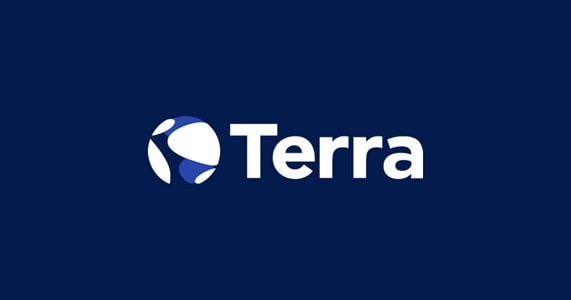The emergence of Bitcoin and the Blockchain Revolution represents a turning point in financial history, introducing the concept of decentralized digital currency and the immense potential of blockchain technology. Satoshi Nakamoto’s creation in 2009, Bitcoin, not only revolutionized the way we perceive currency but also paved the way for a rapidly evolving digital financial landscape. However, it’s crucial to recognize that beyond Bitcoin’s initial success, a diverse array of alternative digital currencies has emerged, each boasting its unique features, applications, and innovations. In the pages of this article, we embark on an exhaustive exploration of these Bitcoin-adjacent digital currencies, delving deep into their underlying technologies, diverse use cases, and far-reaching implications. Keep the good pace up and keep learning about Investment Education from the top investment education firms. Register now!
Understanding Bitcoin and Its Role

A Brief Overview of Bitcoin
Bitcoin, often referred to as “digital gold,” is a decentralized digital currency that operates on a peer-to-peer network. Its creation, driven by the pseudonymous Satoshi Nakamoto, aimed to establish a secure and transparent monetary system.
The Significance of Blockchain Technology
Blockchain technology, the foundation of Bitcoin, offers secure, immutable, and transparent record-keeping. It enables peer-to-peer transactions without the need for intermediaries.
Challenges and Limitations of Bitcoin
Despite its success, Bitcoin faces challenges such as scalability issues and energy consumption concerns. These limitations have led to the exploration of alternative digital currencies.
Also Read: Lesser-Known Crypto Cousins:Navigating Bitcoin’s Shadows
Beyond Bitcoin: Exploring Alternative Digital Currencies
Ethereum and Smart Contracts
Ethereum, introduced in 2015, expanded the possibilities of blockchain technology by introducing smart contracts. These self-executing contracts enable programmable and automated transactions, powering decentralized applications (DApps) and DeFi platforms.
Use Cases and Advantages
Ethereum’s versatility allows for a wide range of applications, including decentralized finance (DeFi), non-fungible tokens (NFTs), and more. Its open-source nature and large developer community drive innovation.
Ripple (XRP) and Cross-Border Transactions
Ripple aims to revolutionize cross-border payments by providing a network for fast and cost-effective international transfers. Unlike Bitcoin, Ripple does not rely on mining but uses a consensus algorithm.
Also see: The Benefits of Connecting Your Bitcoin Wallet to Your Bank Account
Ripple’s Role in Cross-Border Payments
Ripple’s technology, including its XRP cryptocurrency, facilitates real-time settlement and cross-border transactions. Financial institutions and banks are increasingly adopting Ripple’s solutions for their payment systems.
Pros and Cons of Ripple
While Ripple offers efficiency and speed, it faces regulatory scrutiny and controversy regarding its centralized nature.
Litecoin and the Lightning Network
Litecoin, often referred to as “silver” to Bitcoin’s “gold,” was created as a faster and more scalable alternative. It utilizes a similar proof-of-work consensus mechanism but with shorter block confirmation times.
Lightning Network and Scalability
Litecoin has been experimenting with the Lightning Network, a second-layer solution that enables faster and cheaper transactions. This technology has the potential to address Bitcoin’s scalability issues.
Comparing Litecoin and Bitcoin
Litecoin’s faster transaction confirmation and lower fees make it suitable for smaller transactions, while Bitcoin remains a store of value.
Also see: Ensuring Transaction Security with Digital Yuan: Cutting-Edge Measures
The Emergence of Privacy Coins
Monero (XMR) and Anonymity
Monero is a privacy-focused cryptocurrency that prioritizes user anonymity. It uses advanced cryptographic techniques to obscure transaction details, making it challenging to trace transactions.
Features of Monero
Monero employs ring signatures, confidential transactions, and stealth addresses to ensure transaction privacy. This makes it a preferred choice for users who prioritize anonymity.
Use Cases for Privacy Coins
Privacy coins like Monero find utility in privacy-conscious transactions, protecting user financial data from prying eyes. However, their anonymity features have raised regulatory concerns.
Zcash (ZEC) and zk-SNARKs
Zcash is another privacy-focused cryptocurrency that employs zero-knowledge proofs called zk-SNARKs to offer optional transaction privacy.
Introduction to Zcash
Zcash allows users to choose between transparent and shielded transactions, providing flexibility in privacy.
Privacy vs. Transparency
While privacy coins offer enhanced security, their optional privacy features have raised concerns about potential illicit use.
Stablecoins: The Bridge Between Fiat and Crypto
Tether (USDT) and Its Controversies
Stablecoins are digital currencies pegged to the value of fiat currencies like the US Dollar. Tether (USDT) is the most widely used stablecoin, but it has faced criticism and regulatory scrutiny due to concerns about its reserve backing.
What Are Stablecoins?
Stablecoins provide the benefits of cryptocurrencies while maintaining a stable value, making them suitable for various applications, including trading and remittances.
Tether’s Role in the Crypto Market
Tether serves as a bridge between the traditional financial system and cryptocurrencies, providing liquidity and stability in volatile markets.
Legal and Regulatory Concerns
Tether’s controversies underscore the need for transparency and regulatory oversight in the stablecoin industry.
DAI and Algorithmic Stability
Dai is a decentralized stablecoin that maintains its value through algorithmic mechanisms and collateralization. It offers a unique approach to stability compared to fiat-backed stablecoins like Tether.
Introduction to DAI
Dai is created and maintained through smart contracts on the Ethereum blockchain, making it resistant to centralization and regulatory pressure.
How Algorithmic Stablecoins Work
Dai’s stability is achieved through a combination of collateralization, interest rates, and supply adjustments, allowing it to maintain its value close to one US Dollar.
Risks and Benefits
Algorithmic stablecoins like Dai offer decentralized stability but face challenges related to collateral management and market dynamics.
The Future of Digital Currencies
Central Bank Digital Currencies (CBDCs)
Central Bank Digital Currencies (CBDCs) represent a significant development in the digital currency landscape. They are issued and regulated by central banks, offering a digital form of sovereign currency.
What Are CBDCs?
CBDCs aim to provide the benefits of digital currency while maintaining the stability and security associated with traditional fiat currencies.
Central Banks’ Approach to Digital Currencies
Many central banks are researching and piloting CBDCs, exploring their potential impact on the financial system and monetary policy.
Implications for the Global Financial System
CBDCs have the potential to reshape cross-border transactions, financial inclusion, and the role of traditional banks.
DeFi and the Decentralized Finance Revolution
Decentralized Finance (DeFi) represents a paradigm shift in the financial industry, as it seeks to create an open and permissionless ecosystem for financial services.
Defining DeFi
DeFi encompasses a wide range of applications, including decentralized exchanges (DEXs), lending platforms, and yield farming.
Decentralized Exchanges (DEXs) and Lending Platforms
DEXs like Uniswap and lending platforms like Aave enable users to trade and borrow assets directly from their wallets, bypassing traditional intermediaries.
Risks and Opportunities in DeFi
While DeFi offers unprecedented financial freedom, it also comes with risks related to smart contract vulnerabilities and regulatory compliance.
Conclusion
In conclusion, the world of digital currencies has expanded far beyond Bitcoin and the blockchain, ushering in a new era of financial innovation and possibilities. From Ethereum’s smart contracts to Ripple’s cross-border solutions, privacy coins like Monero and Zcash, and the emergence of stablecoins and DeFi, the diverse landscape offers a multitude of use cases and opportunities. As central bank digital currencies (CBDCs) and decentralized finance (DeFi) revolutionize the financial system, it’s crucial for investors, regulators, and individuals alike to navigate this evolving landscape with awareness, recognizing both the promises and challenges that digital currencies bring to the forefront of the global financial ecosystem.













